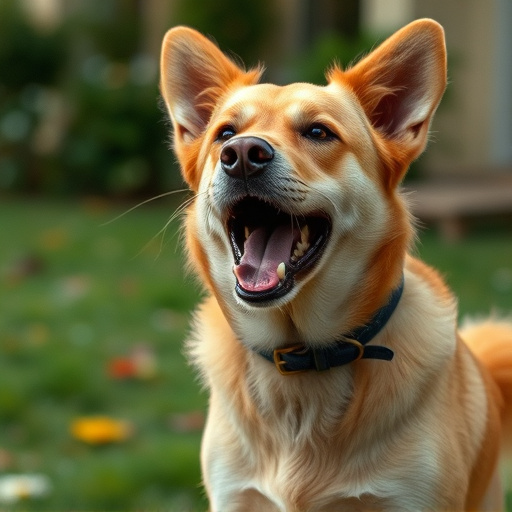Dog repellent spray training exercises focus on desensitization and positive reinforcement to teach dogs to associate the spray with specific actions or triggers, improving their response in real-life situations. Through controlled simulations of real-world scenarios, dogs learn to recognize and react to the scent or application of the spray within its effective range (15-20 feet) and follow commands or signals for protection. Regular repetition and positive reinforcement shape behavior, making dogs more responsive and prepared in diverse environments and lighting conditions.
Mace dog spray, a powerful tool in pet safety, has sparked curiosity about its effectiveness. This article delves into the mechanics of how mace dog spray works, offering insights into its range and application. We explore training exercises to condition dogs to respond to the stimuli, enhancing their effectiveness. By understanding the science behind the spray and implementing strategic training techniques, owners can ensure their pets’ safety in various scenarios. Discover the optimal distance for deployment and learn professional tips for successful integration into dog repellent spray routines.
- Understanding Mace Dog Spray Mechanics
- Training Dogs to Respond to Spray Stimuli
- Effective Distance and Application Techniques
Understanding Mace Dog Spray Mechanics
Mace dog spray, also known as pepper spray for dogs, operates on the same principles as human pepper spray, using capsaicin to induce a burning sensation and irritation in the eyes, nose, and throat. When deployed, the spray creates a temporary yet potent barrier, allowing owners or handlers to safely distance themselves from aggressive dogs. Understanding how this mechanism works is crucial for effective use during training exercises.
Integrating dog repellent spray into training routines can significantly enhance a dog’s response to commands related to behavior management. Exercises should focus on desensitization and positive reinforcement to ensure the spray becomes a reliable tool for redirecting unwanted behaviors. By practicing in controlled environments, owners can teach their dogs to associate the spray’s activation with specific actions or triggers, fostering a quicker and more effective response during real-life situations, thereby enhancing both safety and control.
Training Dogs to Respond to Spray Stimuli
Training dogs to respond appropriately to dog repellent spray stimuli is a crucial component in ensuring its effectiveness during potential encounters. Through targeted training exercises, owners can teach their canines to recognize and react to the scent or application of the spray as a form of protection. This involves exposing them to controlled simulations that mimic real-life scenarios, allowing the dogs to associate the spray with specific commands or signals. By consistently reinforcing positive behavior, such as sitting or staying calm, following retreat commands, and avoiding target areas when sprayed, owners can condition their pets to respond swiftly and effectively when needed.
Dog repellent spray training should incorporate a variety of exercises designed to stimulate different responses from the animal. This includes practicing in various environments—indoor, outdoor, and in different lighting conditions—to ensure the dog’s reaction is reliable regardless of setting. Gradually increasing the intensity or frequency of the spray stimuli during training can help build resilience and responsiveness over time without causing undue stress or fear in the animal. Regular repetition and positive reinforcement throughout these exercises are key to shaping the dog’s behavior, making them more prepared and responsive when facing potential threats in real-world situations.
Effective Distance and Application Techniques
The effective distance of dog repellent spray is a crucial aspect to consider when training and implementing protection measures for your pet. Understanding this range allows owners to ensure optimal protection during encounters with potential threats. Typically, dog repellent sprays can be effective up to approximately 15-20 feet (4.5-6 meters) depending on the product’s concentration and weather conditions.
Training exercises that incorporate controlled application of dog repellent spray within this effective distance are essential. These exercises help dogs associate the spray with a negative experience, deterring them from aggressive or unwanted behavior. By practicing in controlled settings, owners can enhance their pets’ response time and overall effectiveness when faced with real-life situations. Incorporating these training sessions into regular routines strengthens the dog’s understanding of appropriate behavior and reinforces positive reinforcement techniques.
Mace dog spray, when used effectively, can be a powerful tool for handlers to deter aggressive canine behavior. Understanding the mechanics behind its operation, training dogs to respond appropriately through specific exercises, and mastering application techniques are key to maximizing its distance and success as a dog repellent spray. By integrating these strategies into their arsenal, owners and professionals alike can enhance their ability to navigate and control situations involving potentially dangerous dogs.
